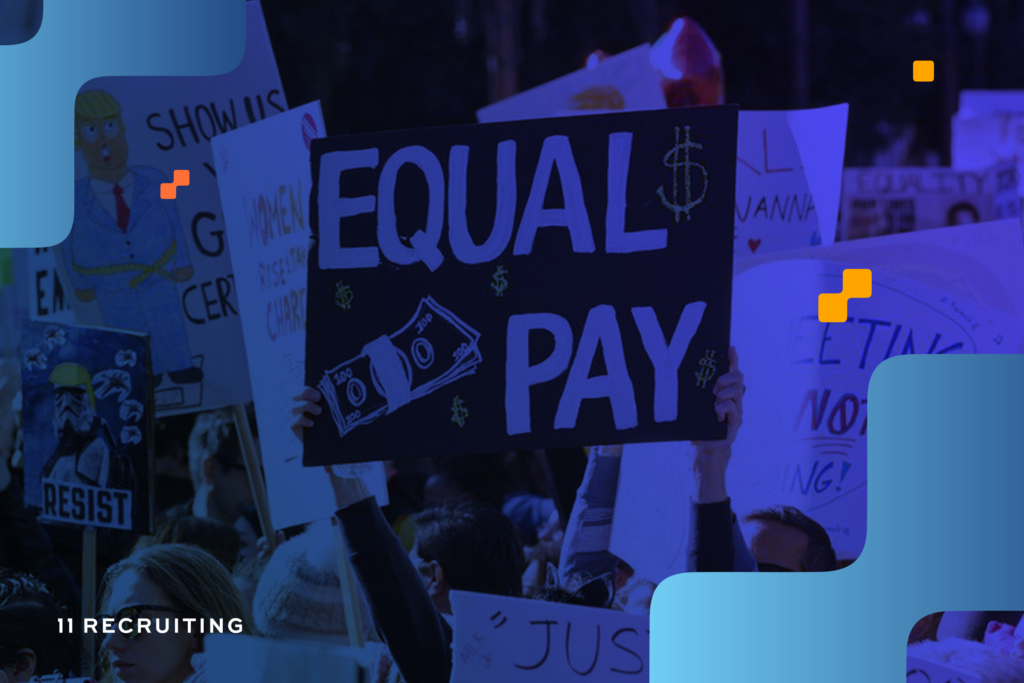
No one likes to feel cheated. If you have been paid less than you deserve because of your skin color, that’s a classic sign of racial pay gap. As of 2017, the average Hispanic woman in the United States made 87.4% of what their male counterparts earned, 75.8% of what white women white made, and only 62.1% of what white American males earned annually.
However, in recent times, both local and global companies have been striving to promote racial diversity. But does this reflect in their remuneration? This article will walk through how the racial pay gaps have affected society, its impact on businesses today, and organizational points of improvement to bridge the gap.
Overview of the Racial Gap.
Despite the various laws and efforts at equality in pay and opportunities for people of color, the racial pay gap still exists. According to the World Economic Forum research, 6 in 10 white respondents indicated they were satisfied with their salary. Only half of the black technologists felt similarly, along with 69% of both Hispanic/Latino and Asian/Pacific Islander respondents, and 45% of Asian Indian participants.
The racial pay gap can be traced back to slavery and the Jim crow era. This period saw the exploitation of black people’s labor. As a testament to this, the demographic of the agriculture sector employed 40% of black workers while white workers made up 26%.
Although we are not invalidating the efforts to improve equality in the workplace, a lot needs to be done. IT is a rapidly developing field that cuts across industries globally. To ignore the racial pay gap in IT recruitment is to not address the elephant in the room.
Importance of Closing Pay Gap.
Organizations are responsible for ensuring that all of their workers are valued and provided with tools and resources to feel secure. If every professional is recognized based on merit and without pay gaps, they would willingly give their best on the job towards the company’s growth.
No company exists without competition, and the competition in the tech space for the most competent talent is intense. Obviously, IT skill and expertise have nothing to do with race, rather an individual commitment to professional growth. Companies that fail to close the racial pay gap lose the best talents to the competition. The greatest asset of long-standing global technology companies like IBM is how they value the diversity of their employees.
Customers and stakeholders are now more informed and interested in company operations and their accountability to be responsible to society and humanity. A racist company is a dent in their reputation. If you’re someone looking for inclusivity green flags, we’d be more than happy to talk to you at our candidate services page.
Frequently Asked Questions
What tech job has the largest racial pay gap?
Mostly Developers, but it varies. Not just for an entry-level IT salary but also for senior developer positions. You can read more about the specifics here.
African-American Developers earn about $93,654 whereas their Hispanic/Latino counterparts garner $98,891. Asian/Pacific Islanders earn substantially better at $115,097 whereas white workers come in at $96,850.
Which race faces the most racial pay gap?
According to a 2016 EEOC report, black and Hispanic workers are drastically underrepresented in the fast-growing and lucrative tech sector, while white and Asian workers are overrepresented. But tech’s diversity problem goes much deeper than questions of representation. For certain minority groups, discrimination extends into their wallets.
PayScale’s data found that black, Hispanic, and Native American workers earn less than their white counterparts in the tech industry. On the other hand, Asian tech workers earn more than their white colleagues.
Overall, Asian workers have the highest median weekly income, followed by White, Black, and Latinx workers. Black men and women make more than Latinx men and women, respectively.
What’s the reason for the largest wage gap?
According to Investopedia, it’s race. Many factors make a job fulfilling but the critical criterion for choosing a career path is financial satisfaction and security. The wage gap represents the unfair divergence between the pay of different groups of people, often by demographic characteristics.
In all levels, starting from entry to the top of the IT ladder, the racial pay gap is wide. It is imperative for companies, competitors, potential IT professionals, and everyone to understand the racial pay gap and how it applies.
Actionable Ways to Close the Racial Pay Gap
Employees also have a responsibility to protect themselves by being aware of the market value of their expertise and what their racial contemporaries are paid. This will equip them to negotiate competitively and not cave into disadvantageous starting points and systems.

Ultimately, the responsibility for closing the salary gaps in a company lies with managers and recruiters. It starts with a definite structure and culture that prizes merit regardless of race. A reorientation of racial inclusivity through workshops and transparent remuneration can also complement this.
Companies can also adopt statutory percentages for racial inclusivity of IT professionals. This might be hard, but it is a deliberate effort at inclusivity.
In conclusion, a difference in employee experience on the basis of race, is not ideal and motivating.

